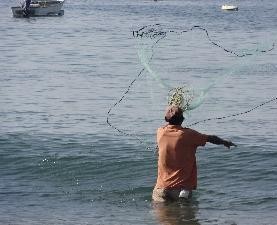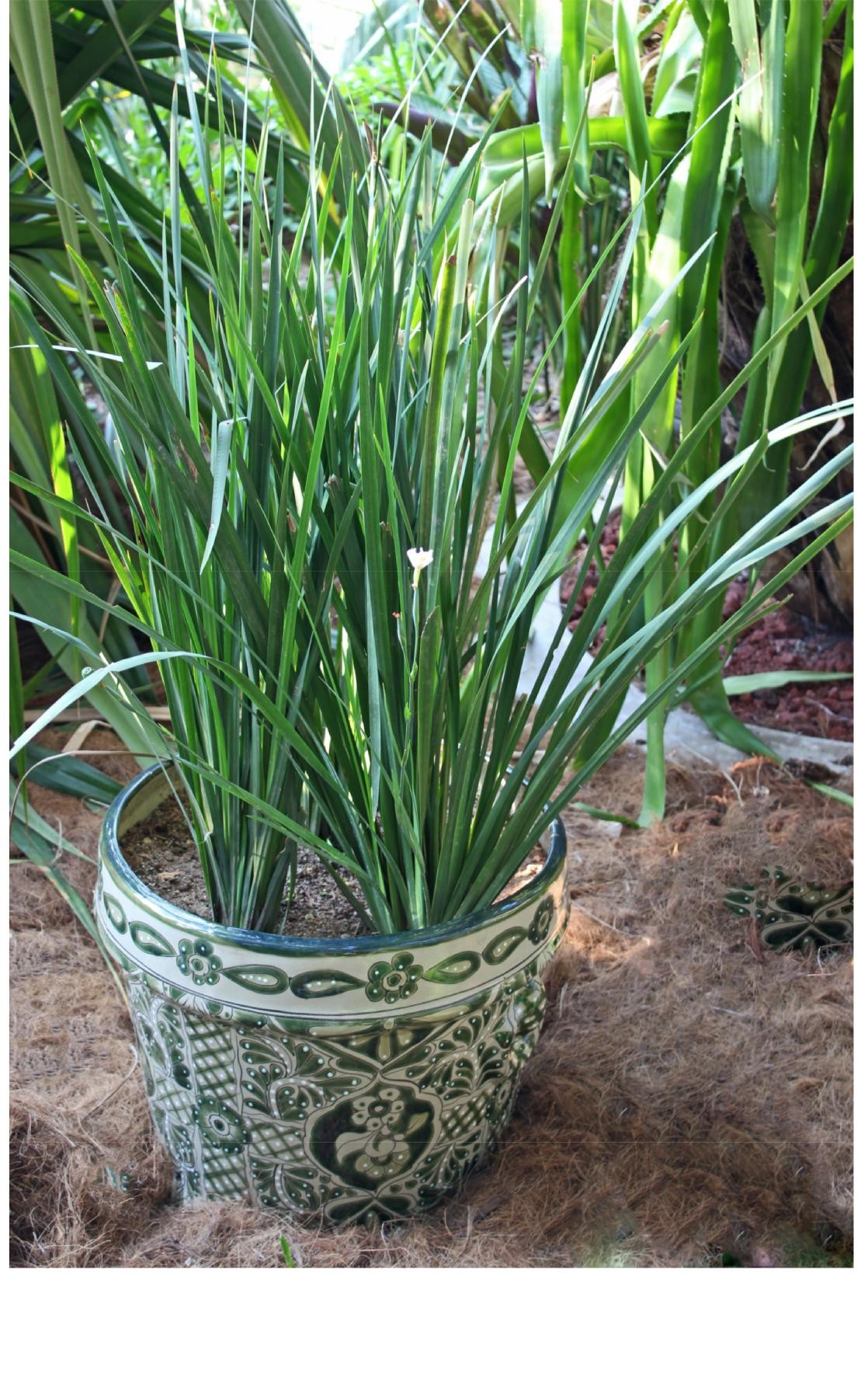By Tommy Clarkson from the January 2018 Edition
Echinocactus grusonii Family: Cactaceae
Also known as: Golden Ball or Mother-in-Law’s Cushion
Those who know me are aware that we’ve few cacti and succulents, as we haven’t room for a large assortment here in Ola Brisa Gardens. The Golden Barrel Cactus is one we do feature, however. And it’s a favorite for one simple fact My Grammy (Mom’s Mom) had one of which she was inordinately proud! She moved it every spring from inside the house to her rock garden southwest of the screened in porch (in which we grandkids looked forward to sleeping at night during the beastly hot days of August). That was an occasion signaling that the arrival of the high end of the temperature spectrum from the cold, blustery Kansas winter!
Now I’m not saying that these guys are not, in themselves, rather robust. This beauty can handle temperatures down to fifteen degrees Fahrenheit (- 9.44° C). (That’s about fifty-five more than can I!) But, sadly, these hardy guys are nearly extinct in their natural environs. However, in an adopted succulent enclave, as noted by Debra Lee Baldwin in her book Succulents Simplified, “[These] butter-yellow balls offer wonderful texture and a wonderful shape.” She also encourages the use of three in a planting for the most attractive look.
But even singularly, they’re pretty! The halo effect achieved when backlit by the sun through the translucence of its slightly drooping golden-yellow spines is stunning! This is a good thing, as it’ll be a while before opportunity arises to enjoy its flowers. It needs to reach fourteen inches (35.56 cm) in diameter closely aligned with being the same number of years in age before the emergence of satiny, pale yellow flowers. (These are unlikely to appear if kept indoors.)
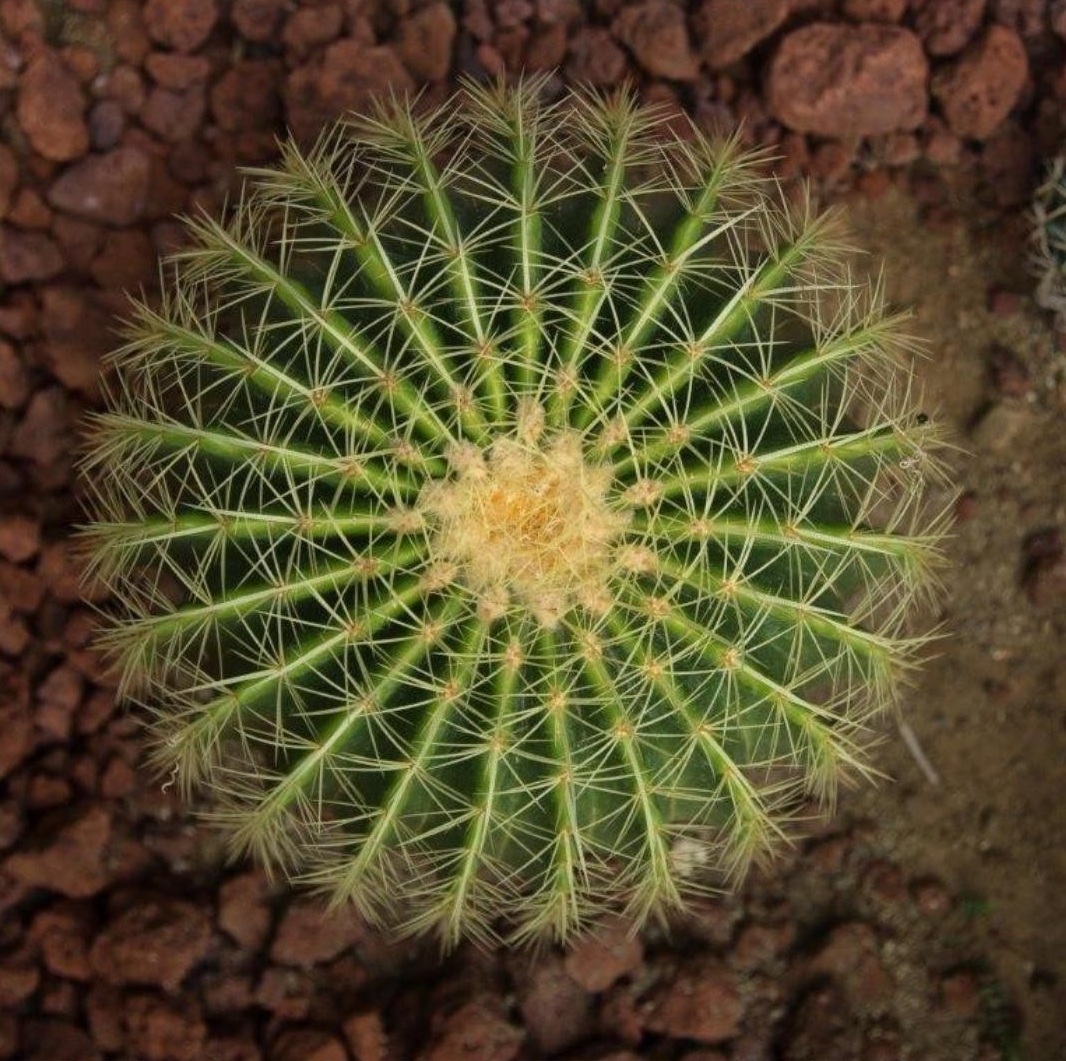
Now the following information I’m quoting directly from The Encyclopedia of Life as it describes the Echinocactus grusonii rather well, I believe, “Barrel Cacti are always found in either a cylindrical or ‘barrel’ shape. They are covered in large, usually thick spiky quills that are two to three inches [5.08 – 7.62 cm] long. These spikes not only help the plant gather moisture from the air, but also protect the plant from possible predators. The Barrel Cactus needs to be completely in the sun for a majority of the time in order to survive.” In turn, about the only plant pests one need worry about are mealybugs, overly zealous waterers, seedy and greedy cactus banditos and thoughtless land developers!
As Mexican original as aguachile, bolillos and camarón ceviche, this prickly characters hallmark sharp, golden-yellow spines. These are militarily arranged in rigidly erect, vertical rows, fully covering its rather symmetrical, globe shaped self. Three positives concerning it immediately come to mind: They are drought-tolerant, suitable for xeriscaping and great for growing in containers.
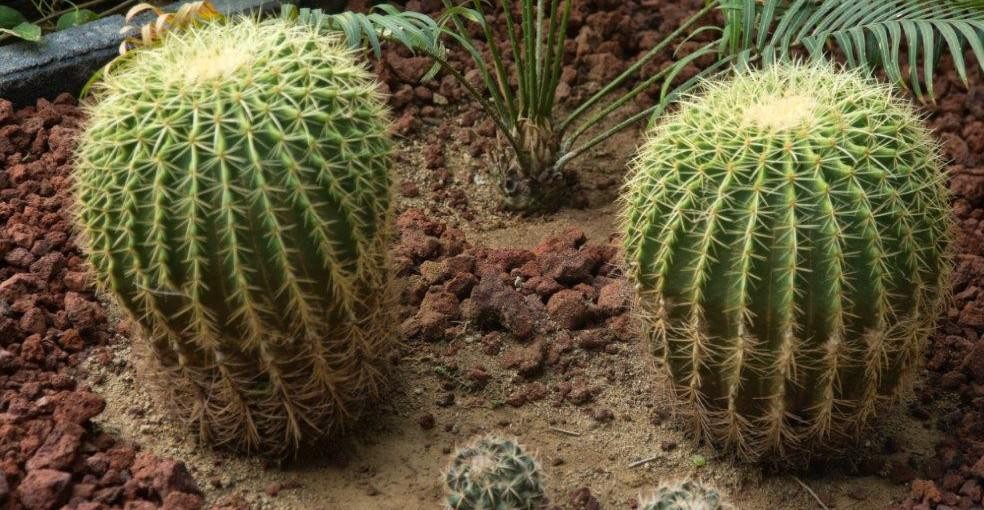
They require little care and attention to grow well. The most common mistakes made with this cactus are providing too little sunlight and/or over-watering. Be extremely careful with how much you give them to drink, ensuring their home is in a very well draining soil/sand mix, as they can rot if overwatered. A pot mixture, used for cactus plants that drains well, will suffice. Adding gravel or small pebbles at the bottom first few inches of the pot will encourage drainage. When handling, I suggest that you follow the counsel given by Ms. Baldwin “Because it’s basically a water tank, a Golden Barrel cactus [can be] larger than a basketball [and] may be too heavy to lift. When transplanting . . . wear thick leather gardening gloves and cushion the plant with crumpled newspaper.”
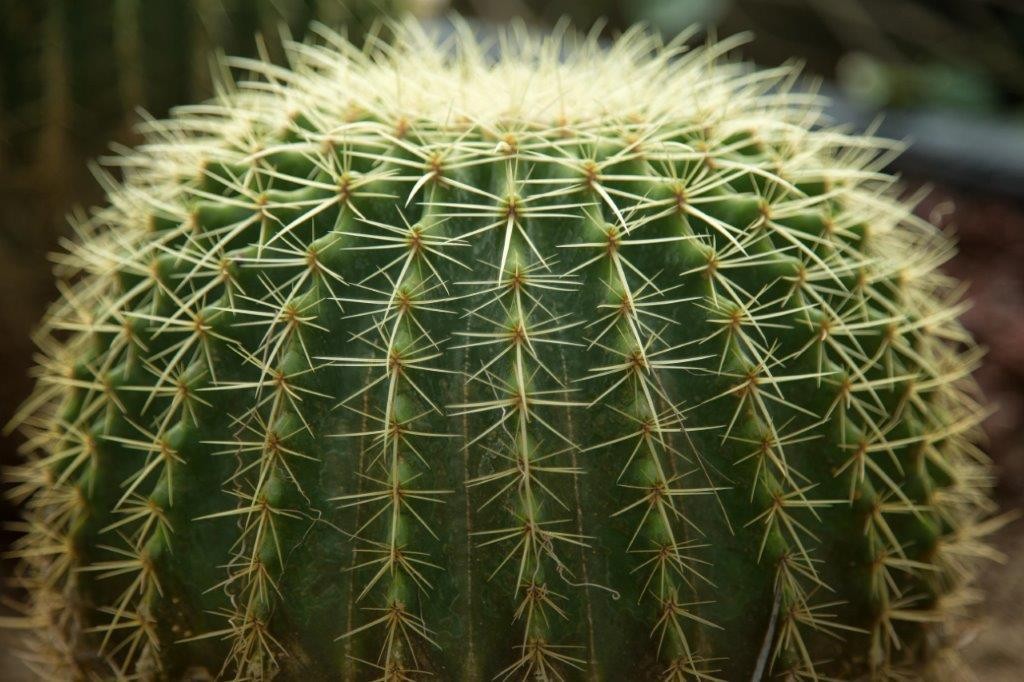
Now, returning to its progression in size, the Golden Barrel Cactus quickly grows to about four inches (10.16 cm) in the first few years. After that, however, it takes several more years for it to double its size. In its native environs, it can eventually grow to around three feet (91.44 cm) wide, but when civilized, cultivated and “citified” it’ll usually only grow to around twelve inches (30.48 cm).
Needing well draining soil, the Golden Barrel Cactus should be fed once a month, during the growing season, with a high pot-ash fertilizer. Should you seek an expanded family of them, propagation may be accomplished by dividing rhizomes, tubers, corms or bulbs (including offsets) or if sought from seed, allow the unblemished fruit to significantly over ripen and then clean and dry seeds before planting. From woody stem cuttings, allow the cut surface to callous over before planting.
Download the full edition or view it online
—
Tommy Clarkson is a bit of a renaissance man. He’s lived and worked in locales as disparate as the 1.2 square mile island of Kwajalein to war-torn Iraq, from aboard he and Patty’s boat berthed out of Sea Bright, NJ to Thailand, Germany, Hawaii and Viet Nam; He’s taught classes and courses on creative writing and mass communications from the elementary grades to graduate level; He’s spoken to a wide array of meetings, conferences and assemblages on topics as varied as Buddhism, strategic marketing and tropical plants; In the latter category he and Patty’s recently book, “The Civilized Jungle” – written for the lay gardener – has been heralded as “the best tropical plant book in the last ten years”; And, according to Trip Advisor, their spectacular tropical creation – Ola Brisa Gardens – is the “Number One Tour destination in Manzanillo”.

